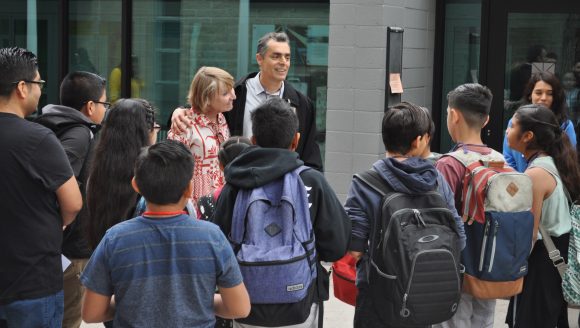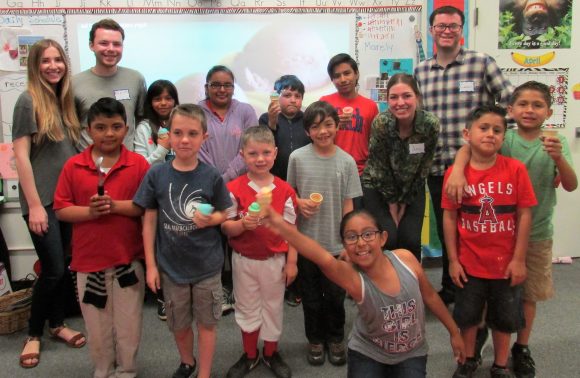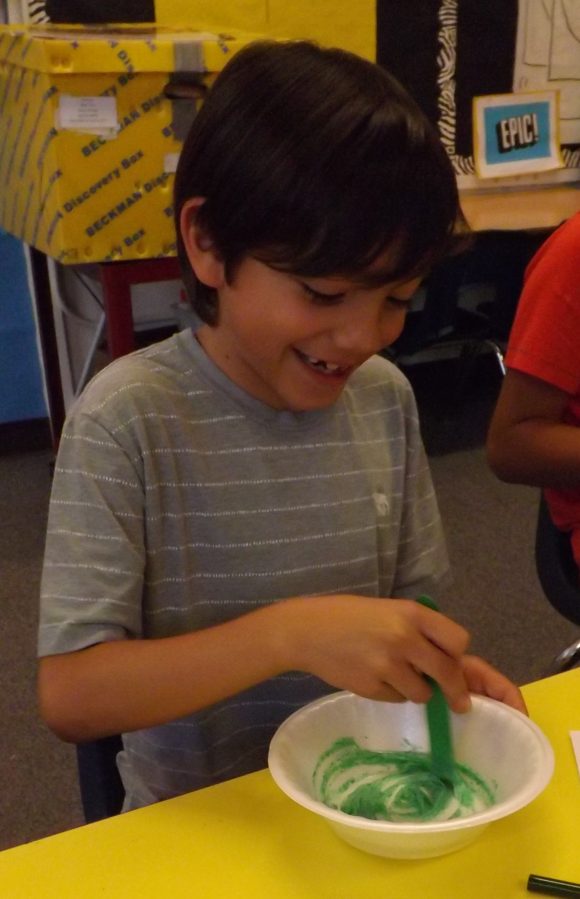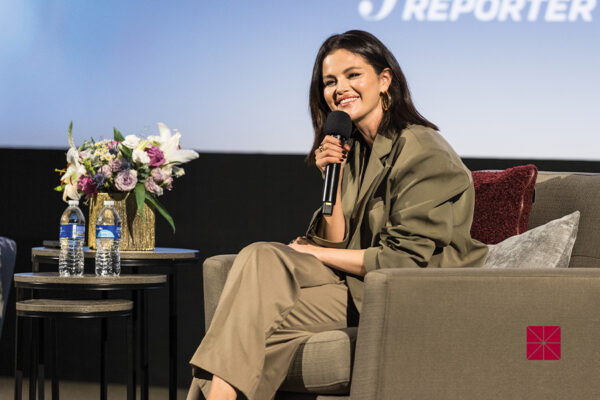They made elephant toothpaste. Moved like a river. Stirred up a batch of fake ice cream that actually looked delicious.
What could those endeavors possibly have in common?
They’re all recent adventures enjoyed by local elementary school students, thanks to a variety of community and civic engagement programs staffed by Chapman University students and faculty this spring. Such activities are a mainstay of student life and community engagement at Chapman, but this semester was a particularly wriggly and gooey one for local youngsters.
Following are just a few highlights of new activities launched this spring semester.
An electrifying visit

A field trip to Chapman is a tradition for the fifth graders at Jefferson Elementary School in Santa Ana, where alumnus Arnulfo Acosta ’96 (teaching credential ’00 and MA ’04) has taught fifth grade for 20 years.
But this year Chapman greeted the young visitors with an extra boost of science pizazz during the field trip they call “Jefferson Elementary Goes to College,” organized by Jan Osborn, Ph.D., one of Acosta’s former professors. Students oohed and aahed as Elaine Schwartz, Ph.D., associate professor of chemistry, invited two lucky volunteers to the front of Irvine Lecture Hall to make elephant toothpaste by combining hydrogen peroxide, food coloring and a chemical catalyst to create a spume of fluffy foam.
In the next demo, sparks really flew. Using a Tesla coil and a keyboard, physics students wowed the fifth graders with a mini concert of crackling electricity that hopped in sync to music. The students, along with Justin Dressel, Ph.D., an assistant professor in Schmid College of Science and Technology and a member of the Institute for Quantum Studies, explained the science behind the show.
Later the fifth-graders toured campus and lunched in Attallah Piazza. Acosta says the school can afford only one field trip a year for its fifth grade, and the Chapman visit continues to be the trip of choice.
“We stuck with this one because we see how valuable the whole experience is for them. They get many things out of it. They get a sense of what it is to be at a university,” he says. “For example, in the science presentation, they can see that college can also be very fun. Yes, we do make them aware that, of course, they’re going to have to work hard, but it can be very fun and the things they learn will open their minds.”
When creative movement meets science

What does it feel like to slither across a dance studio floor, mimicking the action of sand in motion?
“Awesome,” said Anthony Thomas Salazar, a third grader from Sycamore Elementary School in Orange.
And it was a memorable way to learn about creative movement, dance and the dynamics of erosion. Those lessons came together in the revised curriculum for the course Dance Education and Outreach. The course was redesigned and co-taught this spring by Julianne O’Brien, professor and chair of the Department of Dance, and faculty member Jennifer Backhaus ’94, founder of the award-winning Backhausdance company.
Teaching Chapman students how to apply creative movement principles in K-12 education was the main goal. So first the Chapman students learned how to teach creative movement, which varies from dance technique. Then they used that knowledge to create science lessons they taught at the YMCA afterschool program housed at Sycamore Elementary School.
“Our students came up with great ideas that taught principles of erosion, tides, moon phases, the three different states of matter, and nutrition concepts through movement,” O’Brien said.
The dance of sandy erosion the kids performed alongside their collegiate counterparts was part of the semester-end recital hosted at Chapman’s Partridge Dance Center. And they even drew an audience of faculty from the Department of Dance and the Schmid College of Science and Technology.
An extra scoop of media literacy, please

Luis Herrera and his wife Patricia were eager to learn more about how they could manage their children’s television and computer time. So they signed on for a Tuesday evening media literacy workshop taught at Palmyra Elementary School by students from the School of Communication. Good decision, they said.
“The information about the TV ratings surprised me. That was a big awakening. They have their own rankings and they can say whatever they want in regards to the content level,” Luis Herrera said.

The advisory ratings and research about advertising’s impact on children were just a few of the topics covered in the parent education program created by Chapman students, under the guidance of Riva Tukachinsky, Ph.D., assistant professor in the School of Communication Studies.
In an adjacent room, the families’ children met with another group of Chapman students for a related program that showed them how to be wary of the flashy television ads for toys and snack foods.
Palmyra parent Diana Cereceda especially enjoyed the parent comradery in the workshop, which was also presented in Spanish on the following day.
“We’re all parents facing some of the same problems and we can have solutions together,” she said.
The kids, however, might argue that the real fun played out in their room, where they enjoyed games, stories and a gooey craft connected to the evening’s theme. The “ice cream” they stirred up looked delicious, but it was mostly white glue mixed with starch and hair conditioner. As the evening ended, the kids delighted in pranking their parents with scoops of strawberry, mint and blueberry “ice cream.”
No doubt, it was a buyer-beware lesson everyone will remember.




https://uploads.disquscdn.com/images/b4132ce0b0ec298778a9d75790750b8dbb2babb999be645e65c2c5a4687decad.jpg Free math worksheets for local school – http://educoloringpages.com/